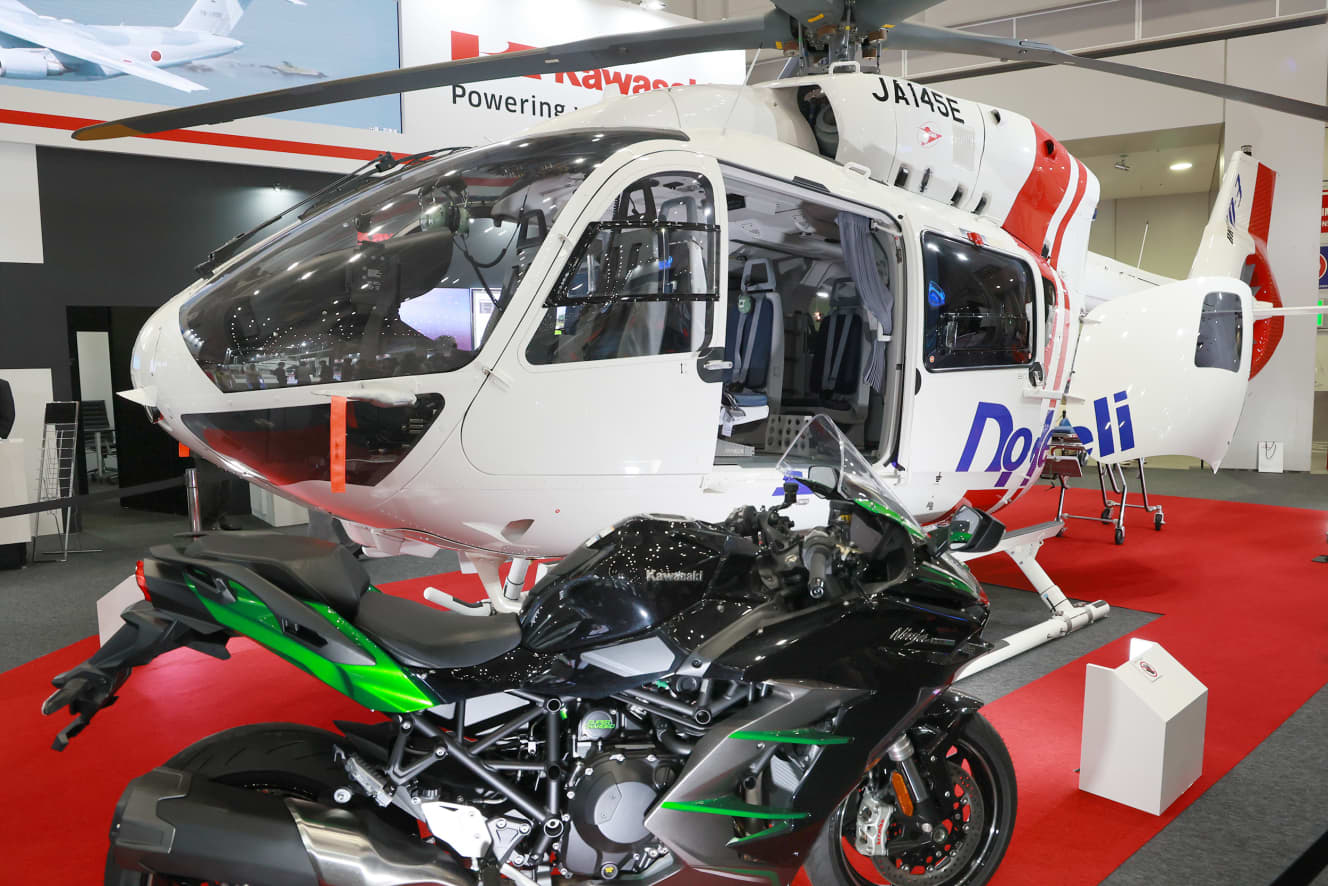Aerospace exhibition brings together new technologies and the “true feelings” of a manufacturer’s staff member in a whisper.
Israeli military companies also participated
The total amount of the world’s military spending is over 370 trillion yen. In April this year, the Stockholm International Peace Research Institute announced that global military expenditures have been increasing for nine consecutive years. Against this backdrop, the “2024 International Aerospace Exhibition” was held at Tokyo Big Sight for four days from October 16.
The main theme of the exhibition, one of the largest aerospace-related exhibitions in Japan, was the expansion and diversification of the aerospace industry. The exhibition was open to the public only on the last day, and many families were seen gazing at rocket models and flying cars with great interest. A representative of a manufacturer said, “This is not a family oriented event.
This exhibition is not an event for families. The original purpose of this exhibition is for military companies of various countries to sell their latest fighter planes and missiles to defense personnel and related companies. Even though these are ostensibly civilian products, they showcase products and technologies that can be converted to military use.”
Outside the venue, a protest demanding the cancellation of the exhibition was held with flyers reading “Don’t be a merchant of death” in their hands.
The venue was attended by Mitsubishi Heavy Industries, IHI, and Kawasaki Heavy Industries, as well as companies from the U.S., the U.K., and South Korea. Of particular note this time was Elbit Systems, a major Israeli military industrial company. The company supplies weapons to the Israeli military, which continues its attacks on the Gaza Strip.
The company, which supplies GPS-guided mortar shells and other products to the Israeli military, appealed at the exhibition that it would “solidify its market leadership position based on the combat experience it has accumulated with its cutting-edge guided mortar shells.
Stealth aircraft lined up…

However, the Elbit Systems booth was suddenly closed on the last day of the exhibition, and photography of the booth was prohibited.
A woman who was protesting outside the venue claimed , “It must be because we protested,” but a staff member at a nearby booth replied, “The last day of the exhibition is the day it is open to the public. I think they closed it because it didn’t lead to business negotiations,” she mused.
The two items that were particularly eye-catching at this year’s exhibition were a stealthy “combat support drone” being developed by Mitsubishi Heavy Industries and a model of the next-generation fighter jet being developed by Japan, the U.K., and Italy.
According to a military journalist, the reason why the next-generation fighter is being developed by the three countries is that “Japan’s F-2 fighter, which is operated by the Air Self-Defense Force, and the Eurofighter Typhoon, which is operated by the United Kingdom and Italy, needed a successor at the same time.
According to an attendant in front of the booth, the three countries are developing a next-generation combat system in which multiple unmanned aircraft flying autonomously via AI are linked via a network and manned fighters issue commands for missile launches, etc., while sharing the workload, and “Japan aims to deploy the system around 2035.
Airbus, a European company with an image of commercial aircraft, exhibited a full-scale model of an unmanned military helicopter under development and a model of a military transport aircraft. Lockheed Corporation competed with each other to show off its own latest technologies, such as by promoting a model of the F-35B stealth fighter jet used by the Marine Corps.
When asked if there was any “military diversion…”

A Styrofoam drone was also on display.
It looks cheap, but it costs about 13 million yen,” said a representative of a major electronics trading company.
It looks cheap, but the price is about 13 million yen,” said a representative of a major electronics trading company.
The drone can be operated by one person, can fly up to 20 km, and return by itself. I heard that the Italian fire department used it to search for missing persons in the forest at night.
When we asked if it is also used by the military, he continued, “I’ m told I shouldn’t say too much, but ……,” he said, his words slurred.
I asked him if this product was being used in the military. “I’m told I’m not allowed to say too much about this,” he continued, “but I’m not allowed to say anything. Australia and the Ministry of Defense are also considering introducing it.

There was also a booth exhibiting a device for “visualizing wind. According to the person in charge, it has the ability to detect drones within a 15-kilometer radius. Originally, the device was as large as a container, but the latest model has been downsized to approximately 100 cm in height and 60-70 cm in width, which is a great advantage, and can be used for military purposes.
At another booth, there was a small unmanned aircraft that can take off from the surface of the water by itself, which was developed to patrol poachers fishing at sea.
Technological innovation brings various benefits to mankind. On the other hand, they can easily be converted to military use. Ethical judgment is strongly required on the part of developers.
